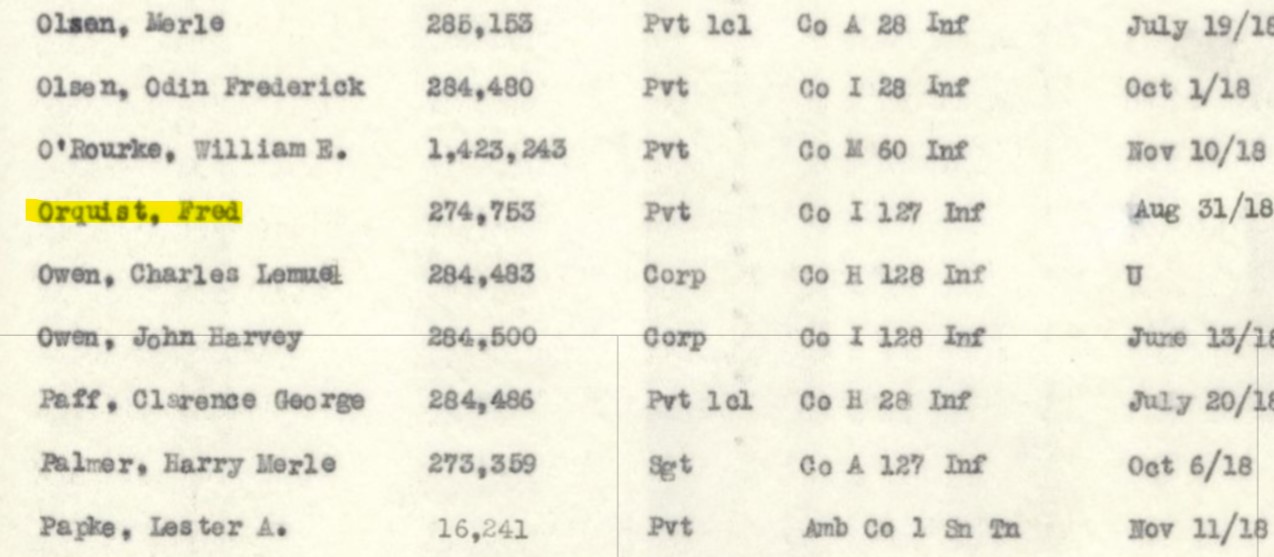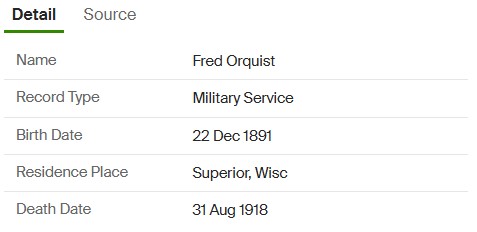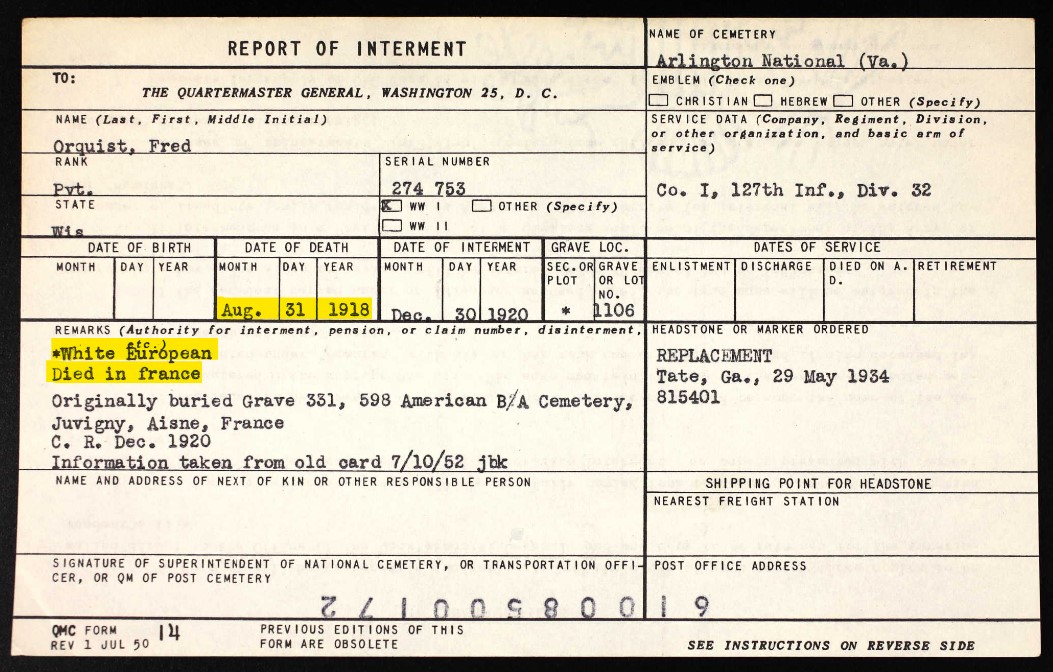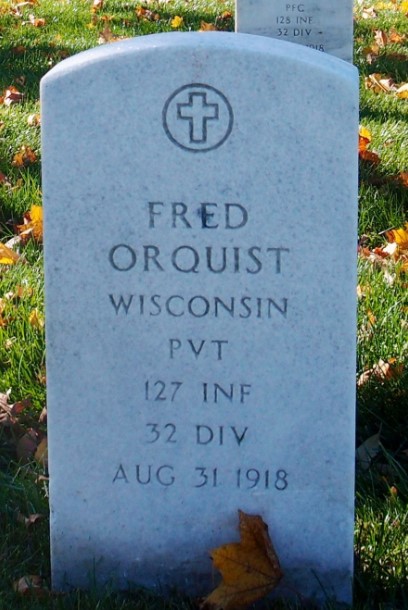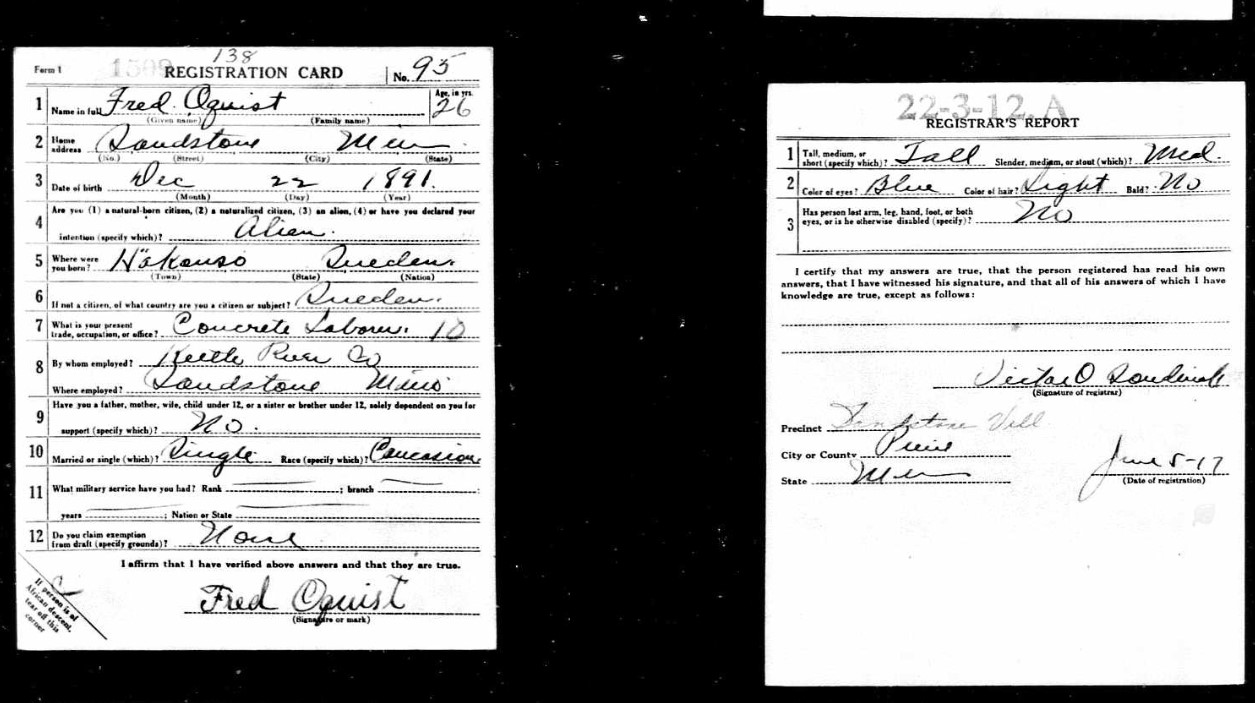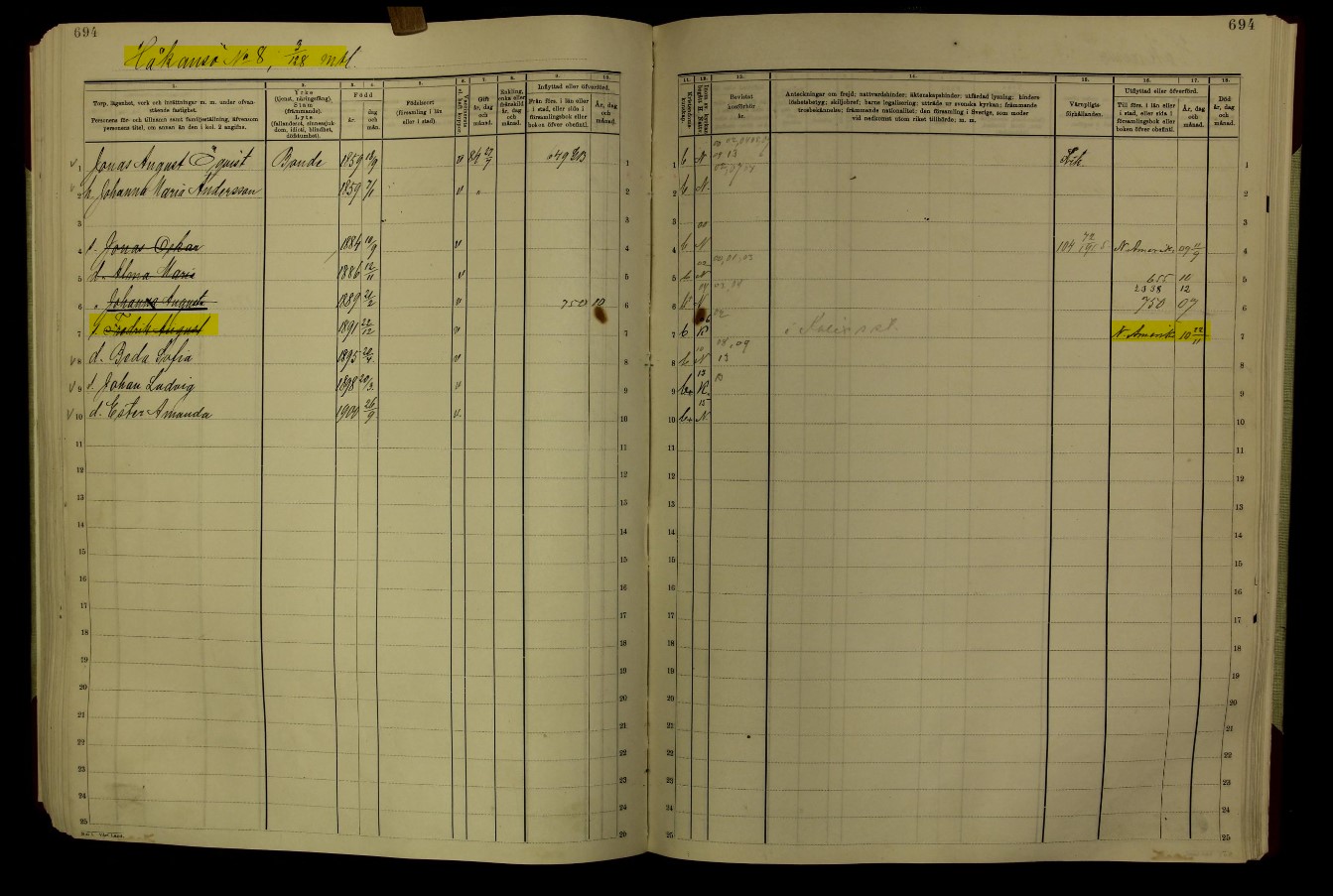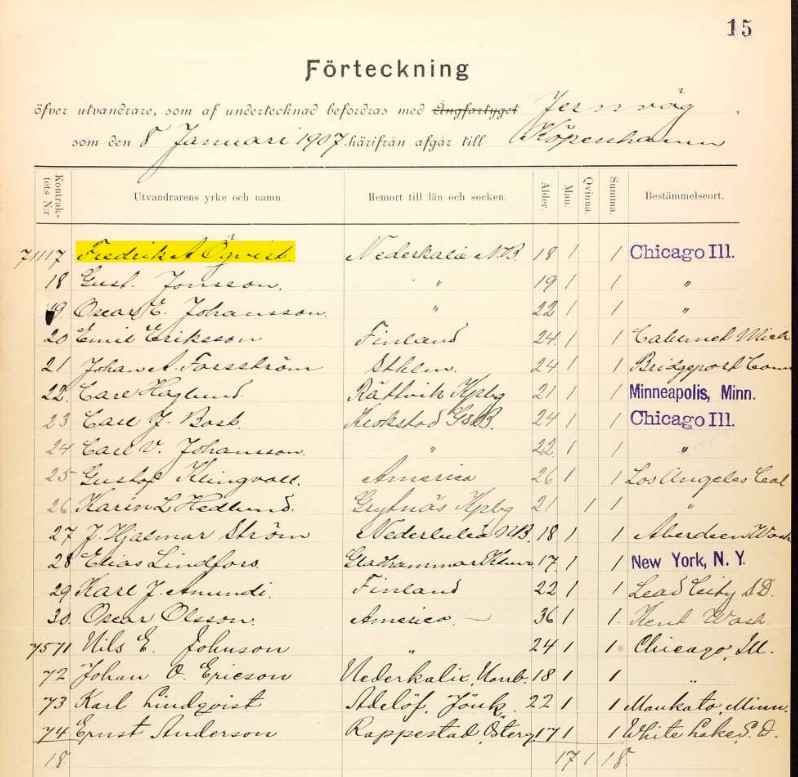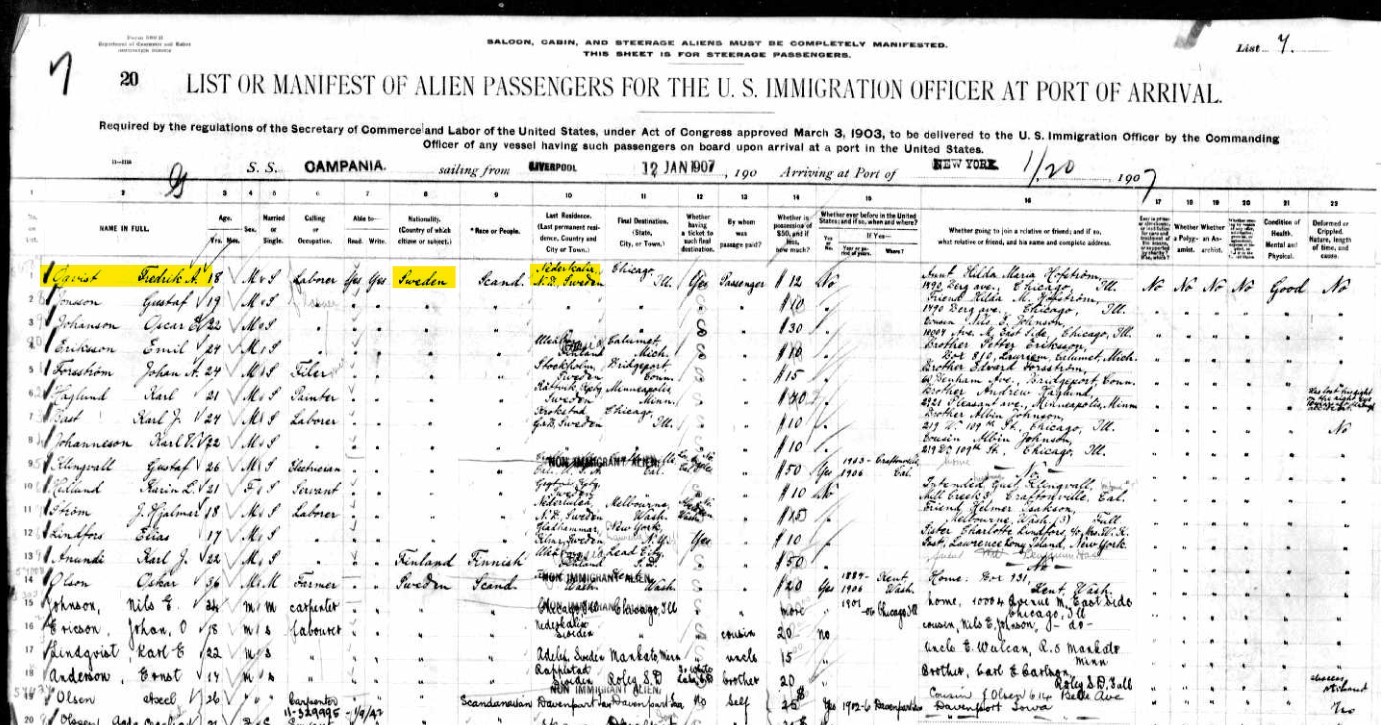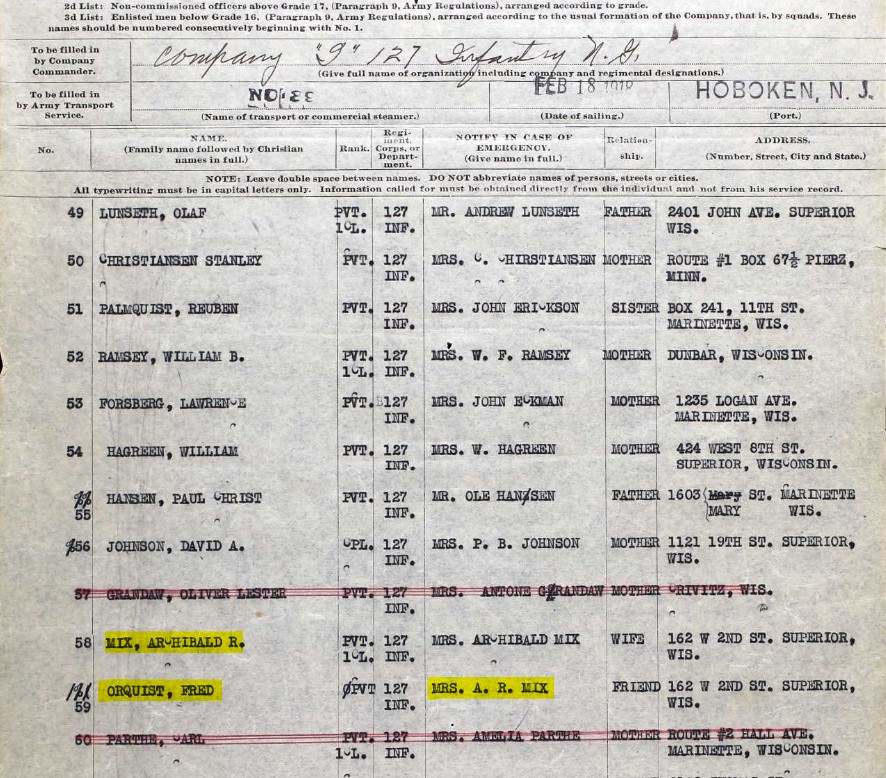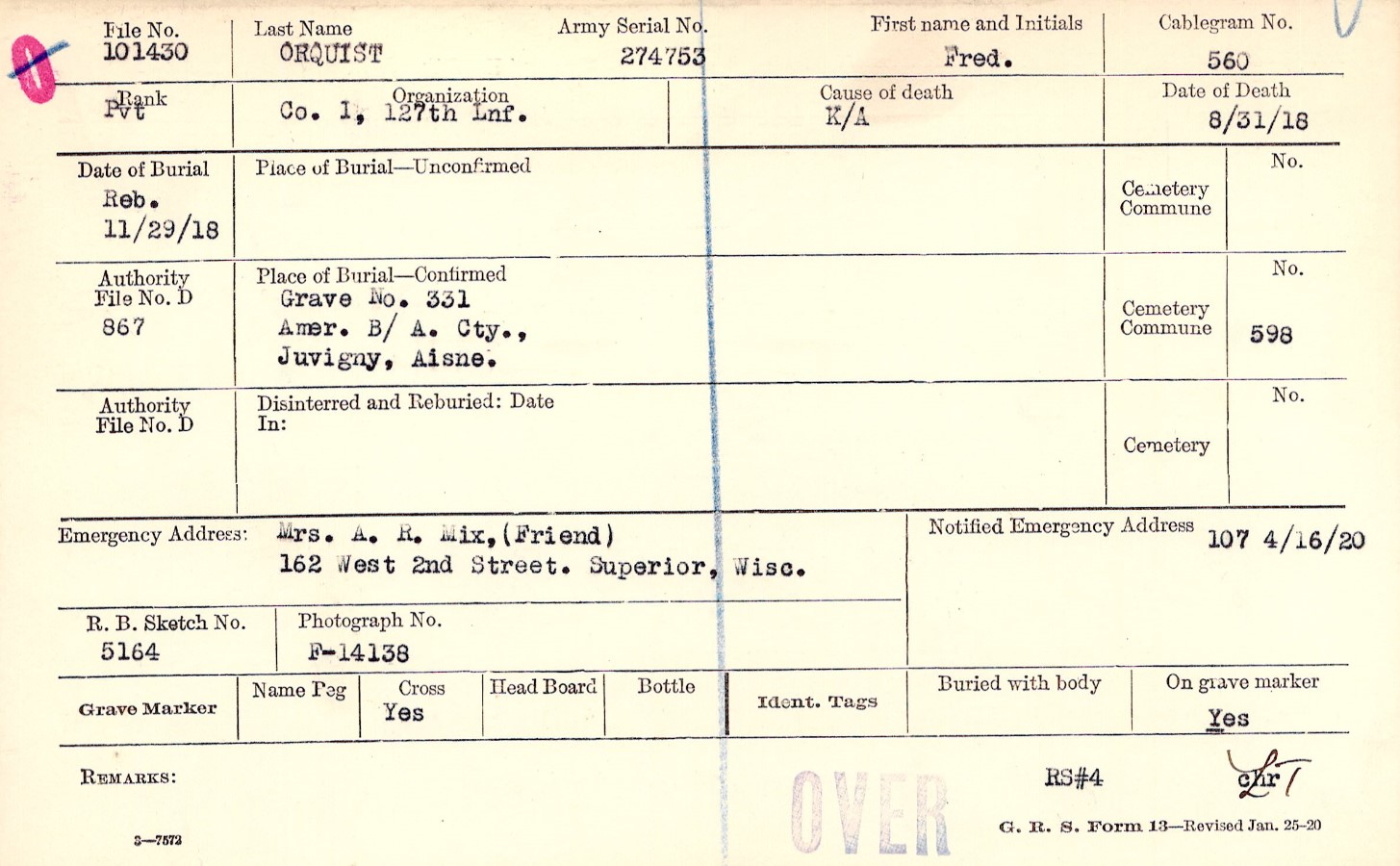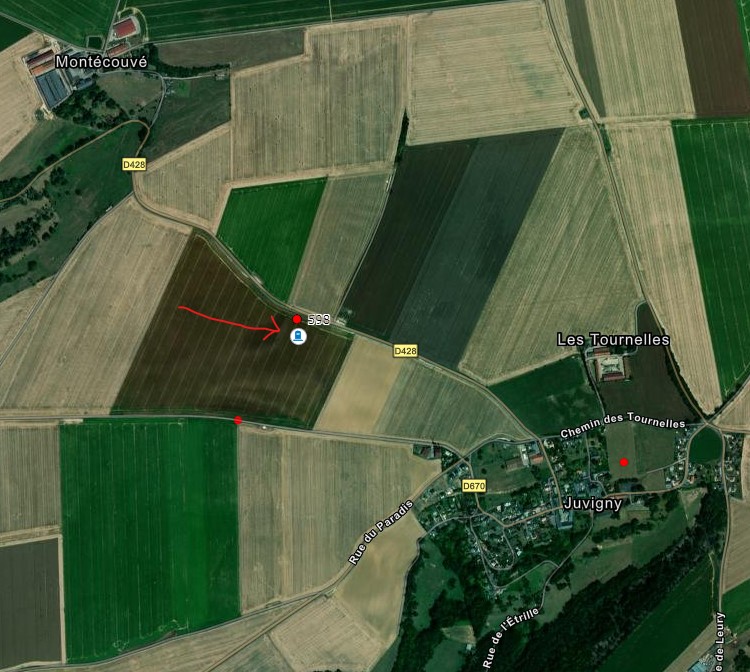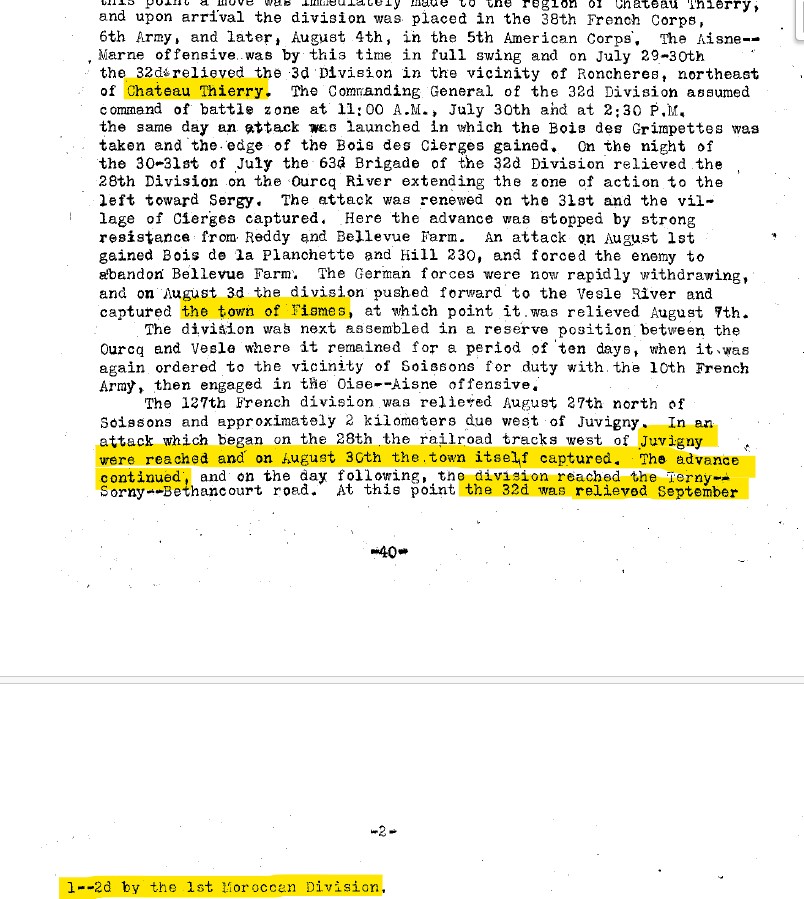This could have been the words from the United States department of war, or the American Battles Memorial Commissions (ABMC), when it was discovered that her brother, who they buried in Siloa Lutheran Church Cemetery in Minnesota, April 18th, 1922, wasn’t the soldier they thought it was.
Gustaf E Hoglund was killed in action in France, November 1st, 1918.

I am amazed over that I haven’t seen more of these cases, where the soldiers have been mixed up during their repatriation back home to the USA, when the relatives had the opportunity to be able to get their sons or husbands repatriated and reburied close to the family, instead of still be buried at their last resting place in France or Belgium, or other places.
It must have been a huge logistic operation to take care of the remains from the soldiers that may have been buried directly after their death, disinterred and reburied into a larger cemetery and then be removed from that burial, to finally be buried in a cemetery, close to their descendants, or other cemeteries, like American Military Cemetery in Arlington, Virginia, depending of the specific situations.
In this case, Frieda Carlson (born Frida Christina Catharina Höglund) received the remains of her brother, Gustaf E Hoglund (Einar Gustaf Höglund), back to Minnesota where Frieda lived at the time. The body was buried in Siloa Lutheran Church Cemetery, April 18th, 1922. It is noted in the church book from that moment. See below.
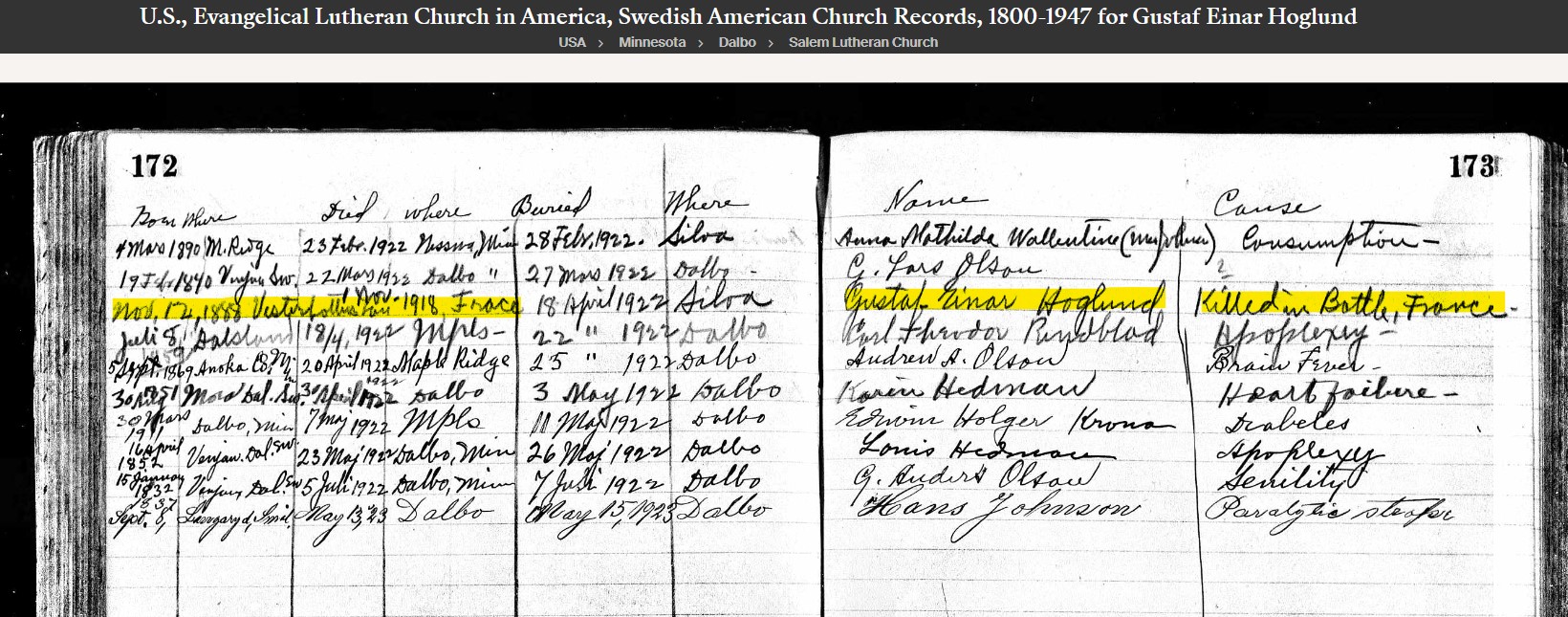
Einar Gustaf Höglund was born in Nysätra parish in Västerbotten County, Sweden, November 12th, 1888. He was raised by his parents, his father Gustaf Höglund, and his wife from a second marriage, Anna Serafia Persdotter, who also was Einar Gustaf’s mother.
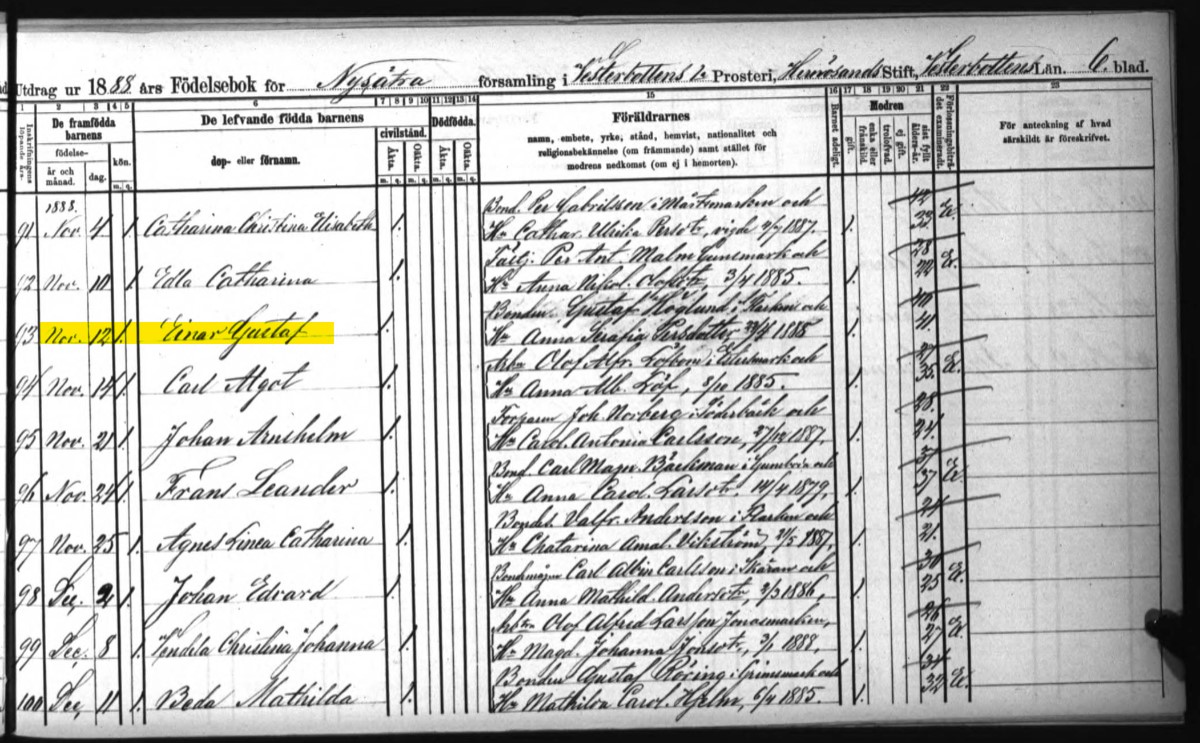
There is no specific note in the Swedish church books about when Einar Gustaf left Sweden, but he is noted to have arrived to Ellis Island in the USA in May, 1908, and he also stated that year in his petition for Naturalization, in July 29th, 1918.
Before that he was drafted in June 5th, 1918. He left the USA with the 343rd Infantry regiment 86th Division, who became a reserve unit for other units when they arrived in France. The transport arrived to France around September-October 1918, no specific date is mentioned on Einar’s shipment.
He must have been integrated in the 78th Division, in 311th Infantry regiment, as it is this unit that is mentioned on his Burial Card. He was killed in action November 1st, 1918, and we can read the following from the unit diary:
“On November 1st Hill 180 in the southeastern part of Bois de
Bourgogne was taken. The capture of this position rendered the Bois des-Loges
untenable. and on November 2 these woods were completely cleared of the enemy,
and the division pushed on, capturing the town of Briquenay, advance elements
entering the town of Boult-aux-Bois.”
Einar Gustaf Hoglund was initially buried just around 2 km north of Grandpré, just beside of the road, in the cemetery. It looks like he was the only burial described on the blueprint from that time.

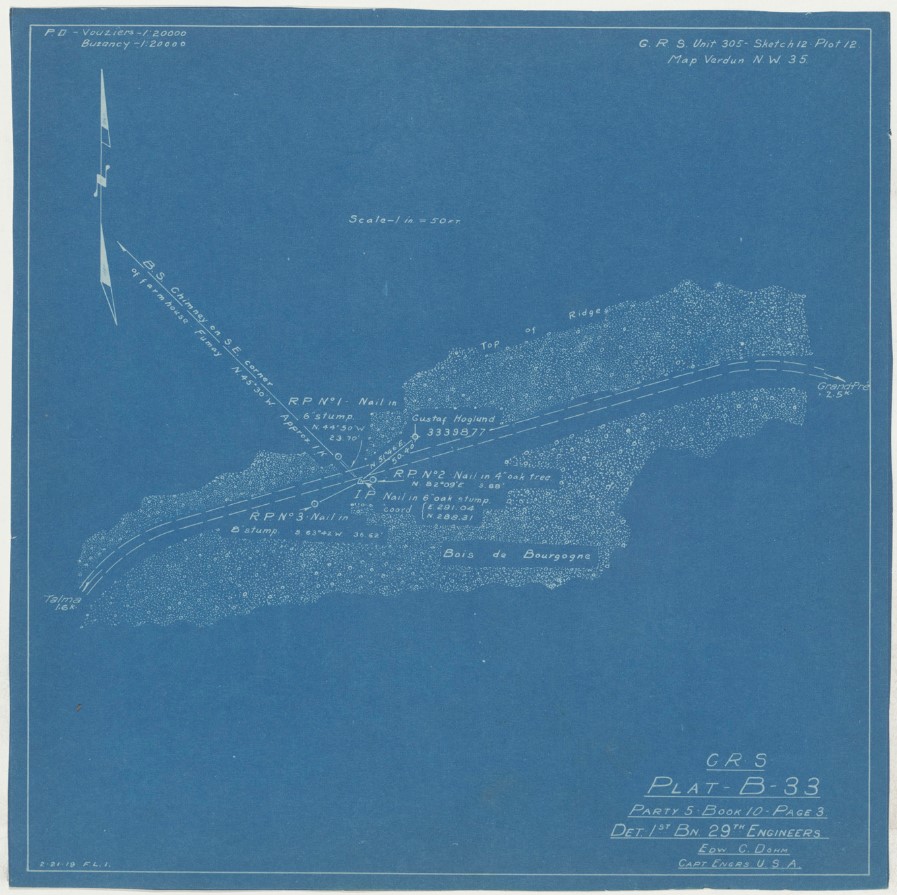
On May 22nd, 1919 he was finally reburied into the Meuse-Argonne American Cemetery, and he should have been shipped to his Next-of-Kin, Mrs Frieda Carlson, his sister, in Braham, Minnesota. The body is noted to have been disinterred in February 22nd, 1922, and then shipped from Le Havre in France, February 27th, 1922, to finally arrive in Hoboken, New York, March 19, 1922.
The body was finally buried in Siloa Lutheran Church cemetery in April 18th, 1922.
But it wasn’t him.
It seems that the body that was shipped the above mentioned dates was the body of William H Scott.
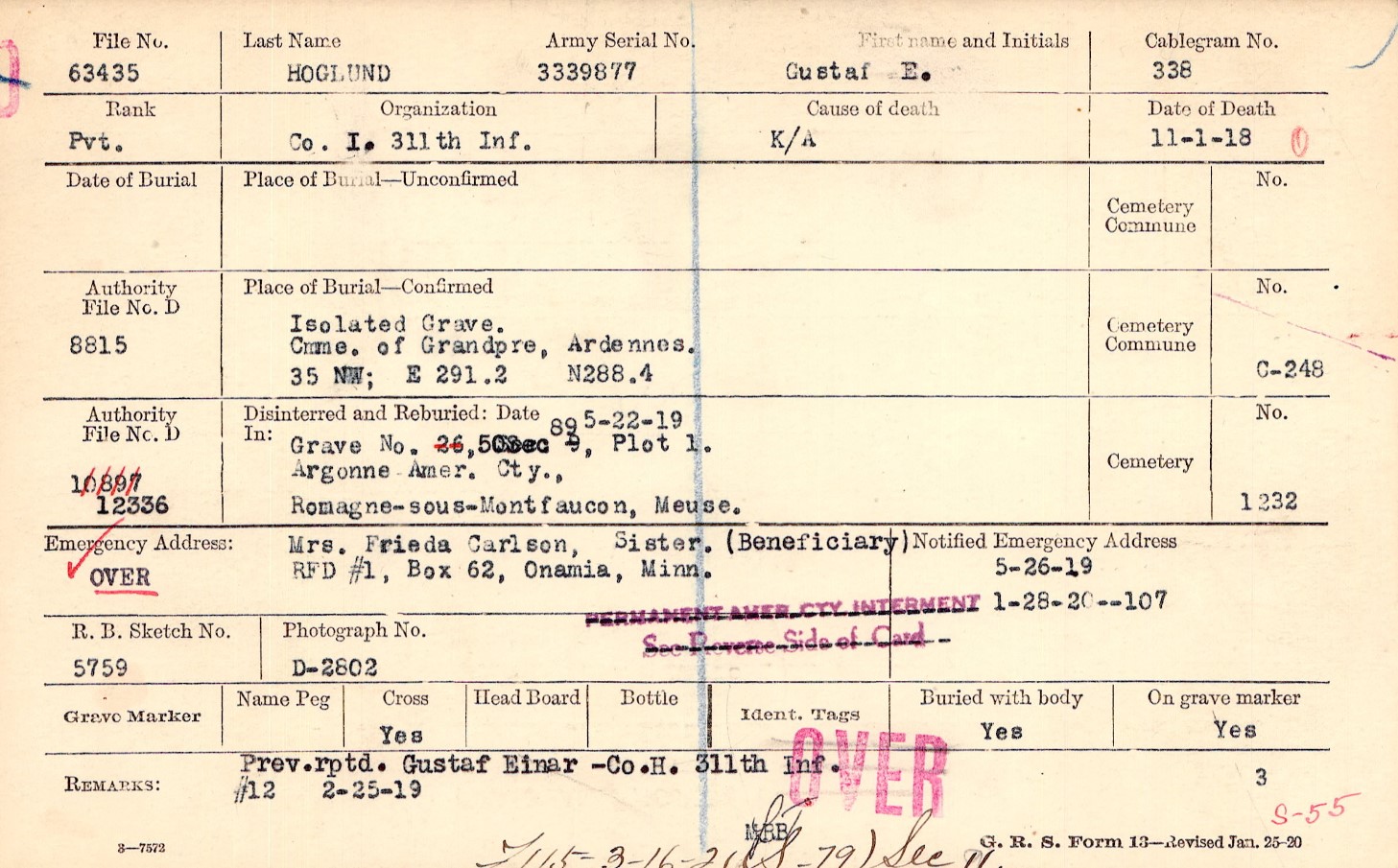
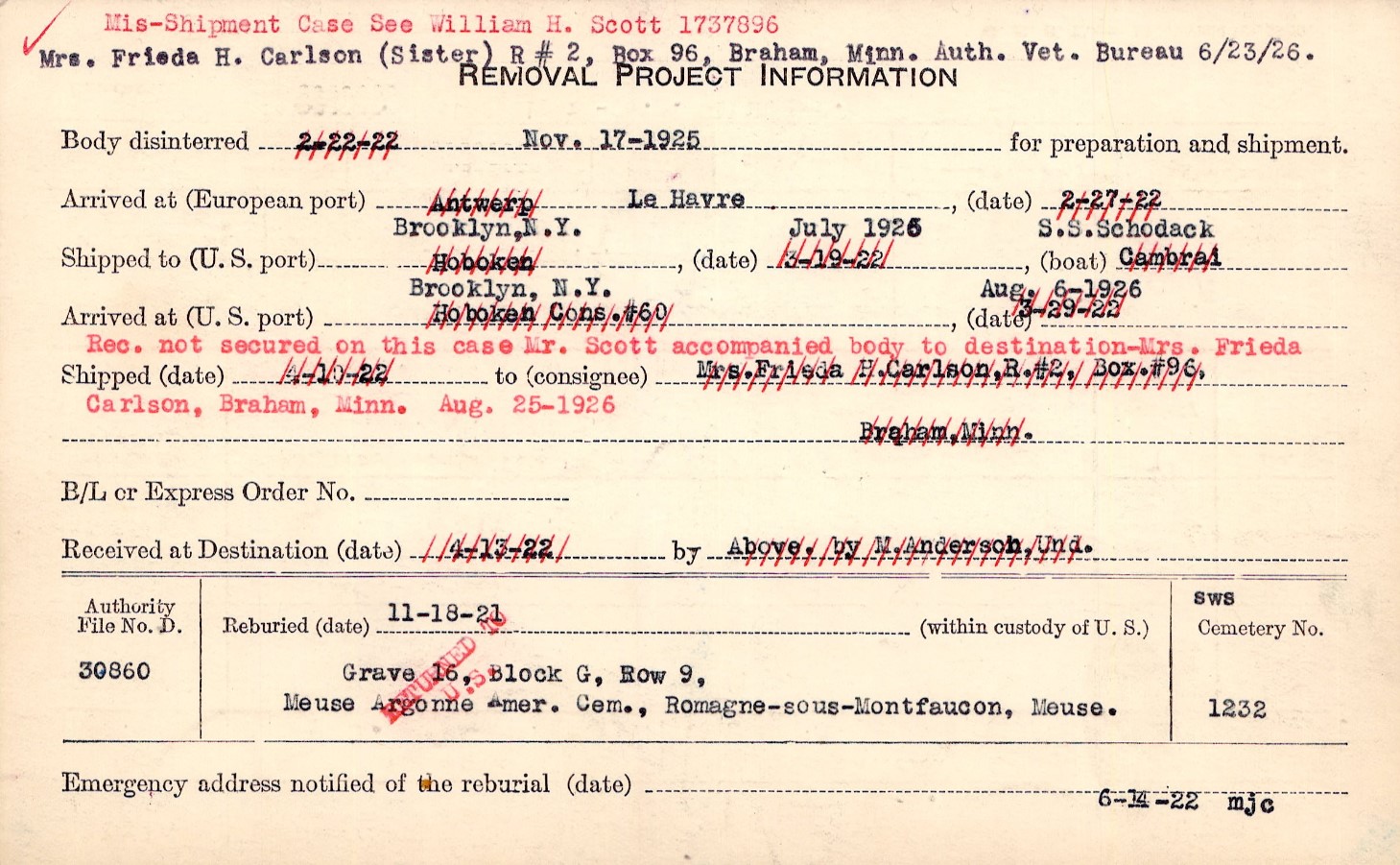


William H Scott seems to have been in the same unit as Einar Gustaf, Company I, 311th Infantry Regiment, 78th Division. The interesting thing is that the same position of the original burial in the woods, north of Grandpré, is also noted on the burial card of William H Scott. But on the blueprint above, I only find Gustaf Hoglund’s name.
I don’t know how or when they discovered that the body was the wrong body, probably through some documents. It must have been after the notes in the Church books from the Siloa Church, from April 1922.
It may have been in 1926, when they shipped, as I can read from the document, the correct body of Gustaf Einar Hoglund, back to the USA. There is also a new note in the church book from Siloa Lutheran Church, which says that he is buried again on September 5th, 1926.

I haven’t been able to find much history about William H Scott, or what happened to his body, which probably was buried in Einar Gustaf’s place in the USA. I can’t find any information or a photo from the last burial of Gustaf Einar Hoglund, but I hope I can follow some more leads, and find it later
Please feel free to give your opinion on my thoughts above.
It makes me glad to read that Einar Gustaf Hoglund finally was buried again in 1926, I wish I could find a photo of his last burial. I also hope that Frieda, his sister could find some peace after the mix up finally was cleared up.
“In the end, more than 45,000 American families opted for repatriation, and throughout the early 1920s ships bearing flag-draped caskets, sometimes thousands at a time, landed in Hoboken, New Jersey, where military and civilian dignitaries, including President Warren G. Harding (1865-1923), were on hand to receive them. From there, the caskets went by rail to cities and towns across the nation, where a posthumous hero’s welcome awaited each one. Behind the patriotic hoopla, however, were gruesome realities.
For understandable reasons, some of the caskets contained the wrong bodies, others no bodies at all – just body parts thought to belong to the same individual.”
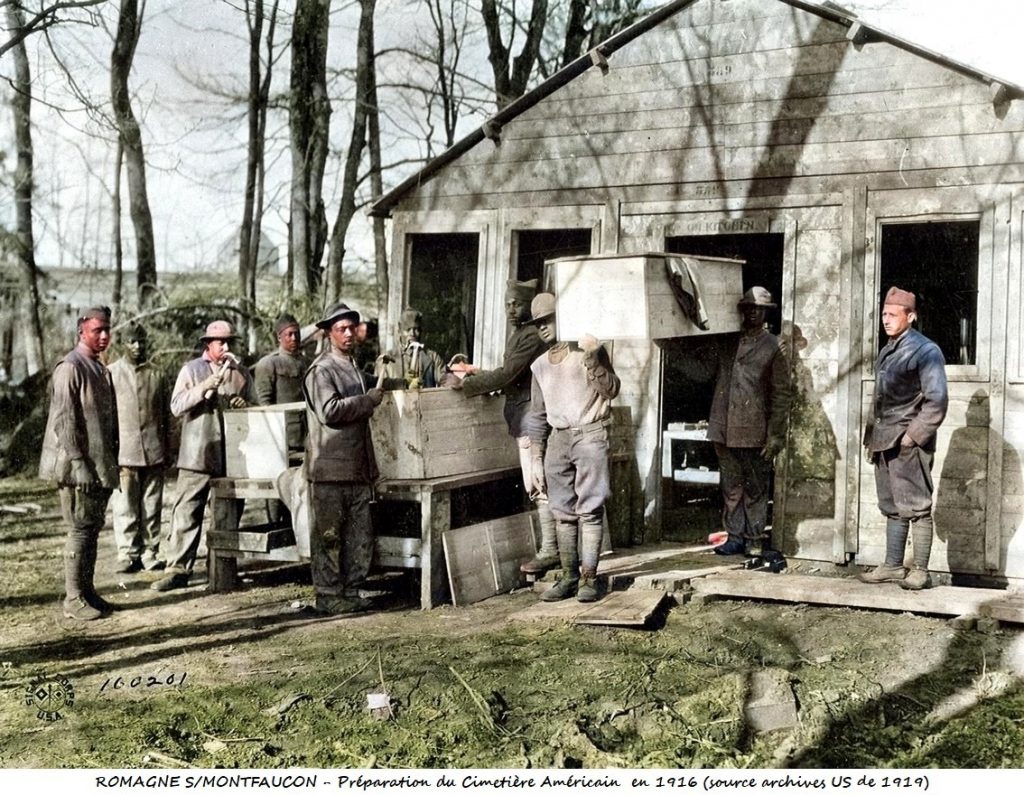
(Source: https://verdun1916.eu/?p=7073)

